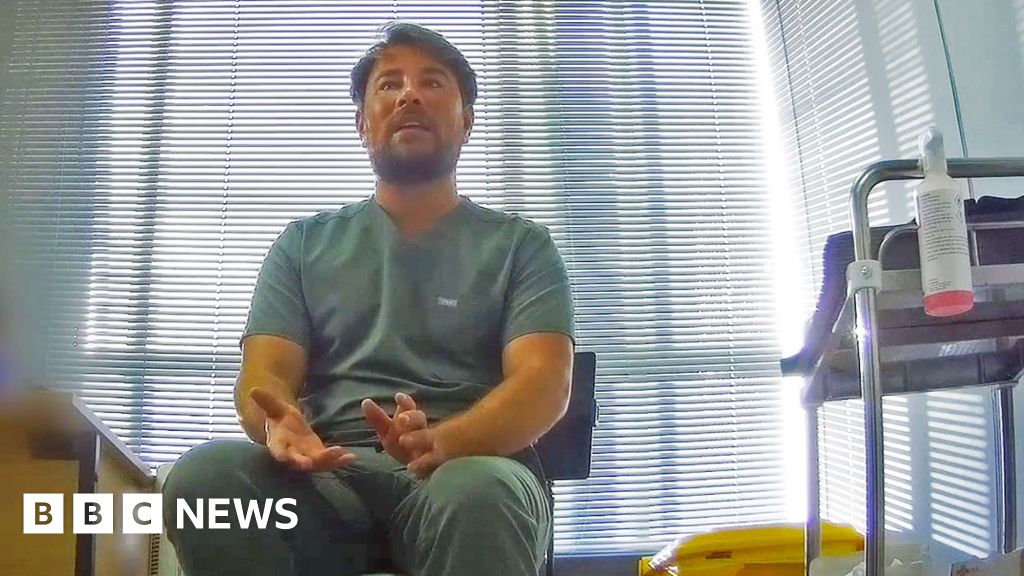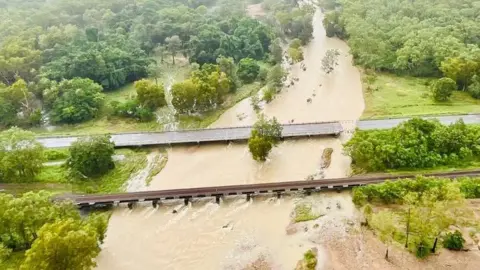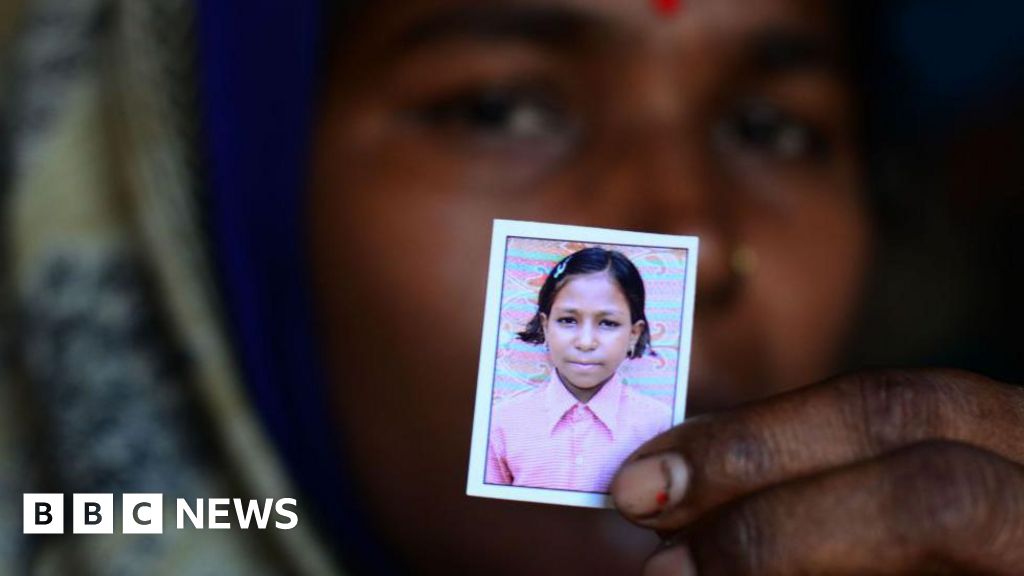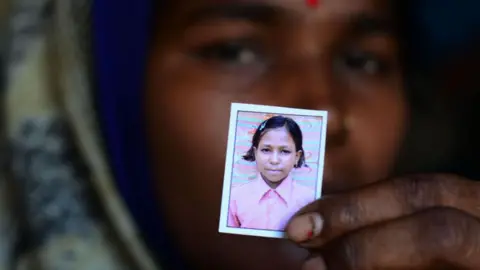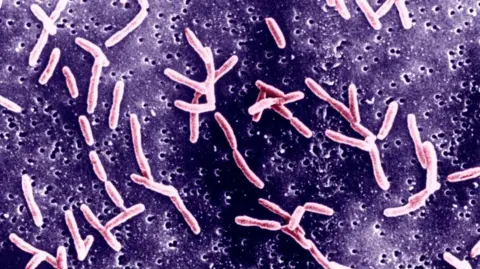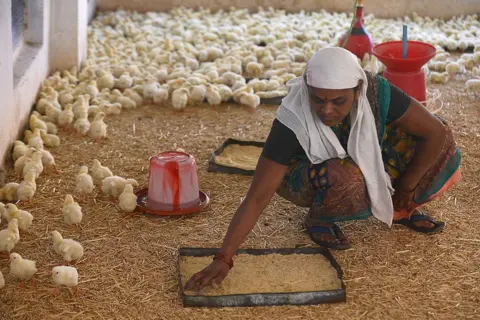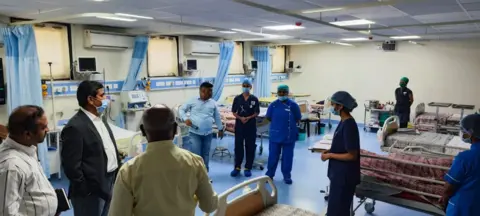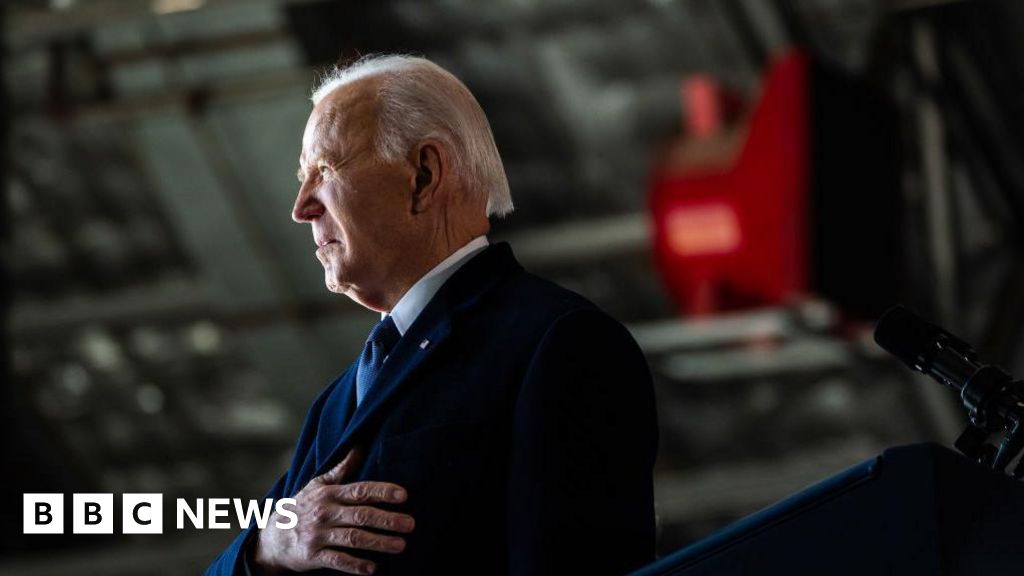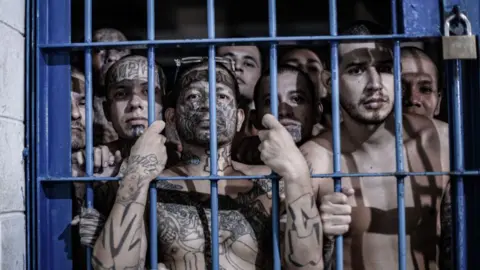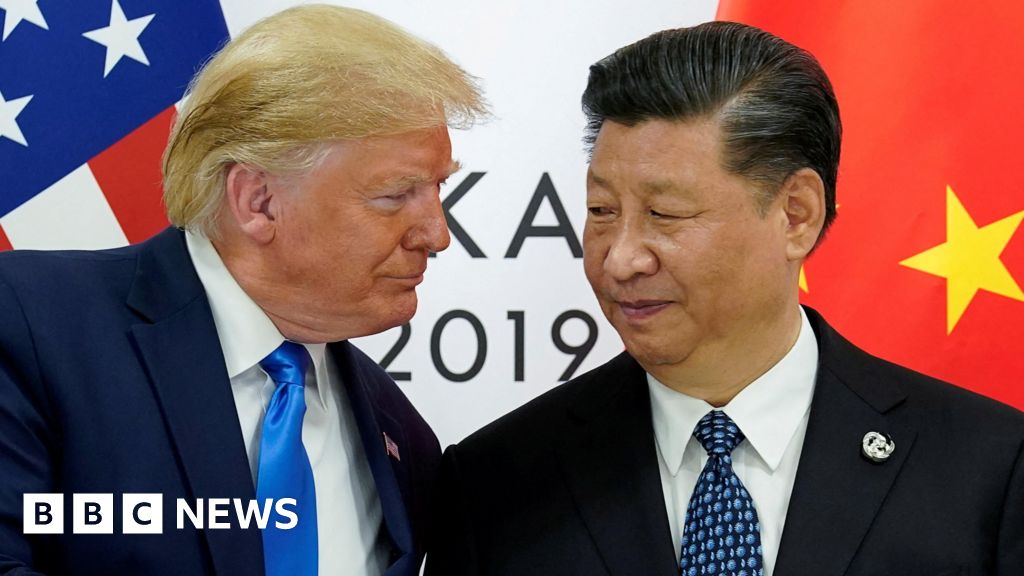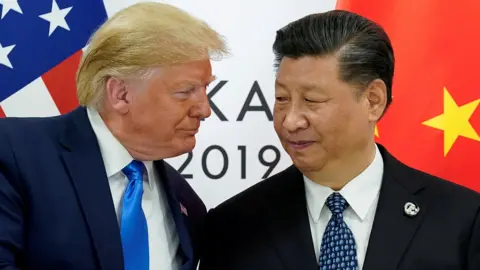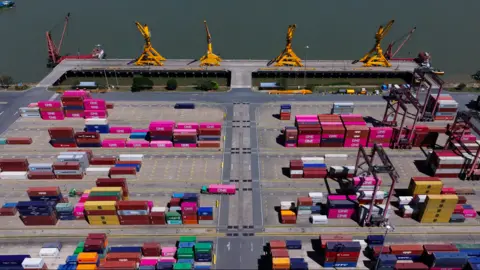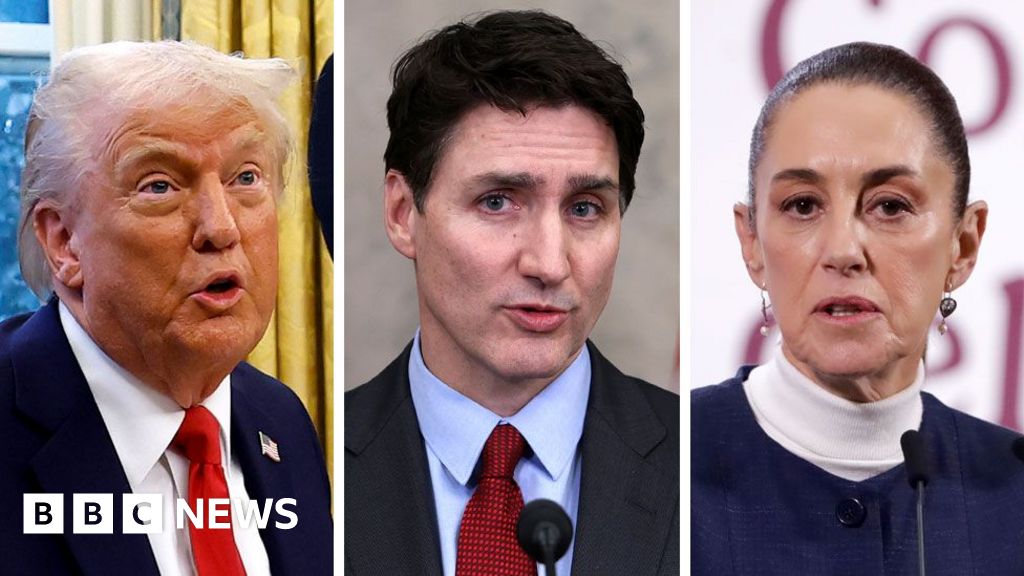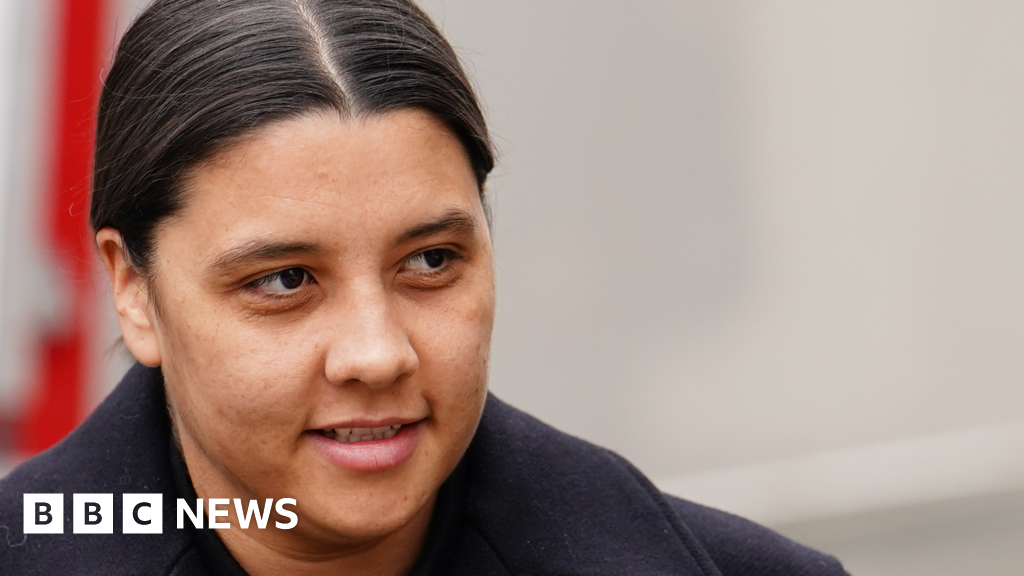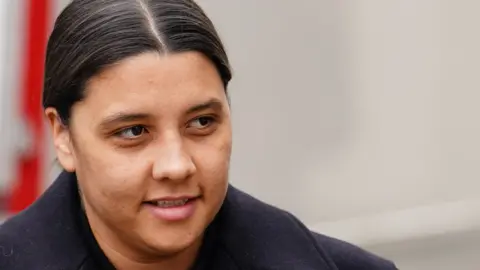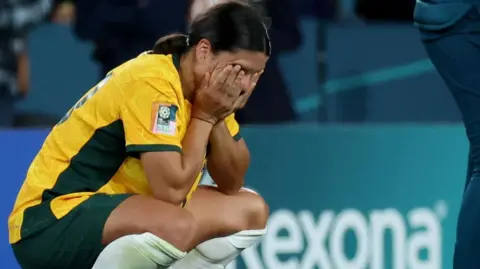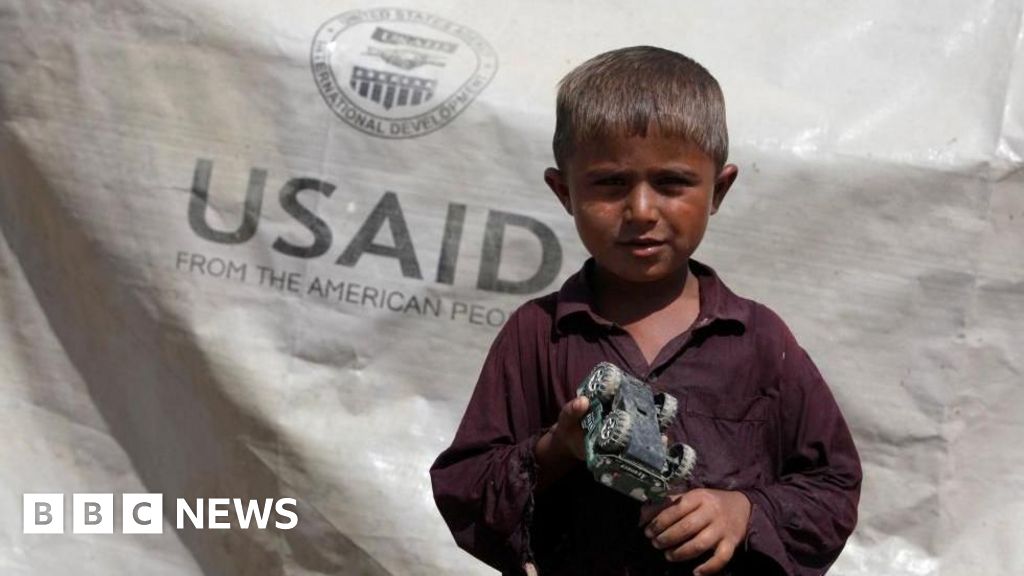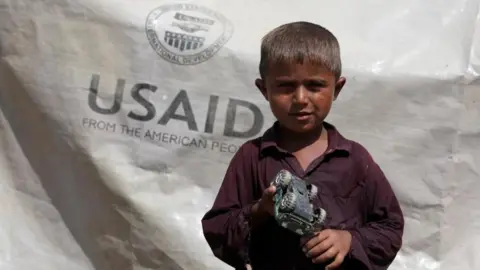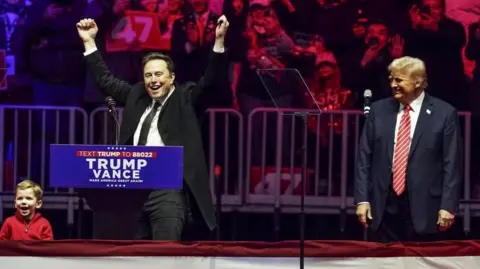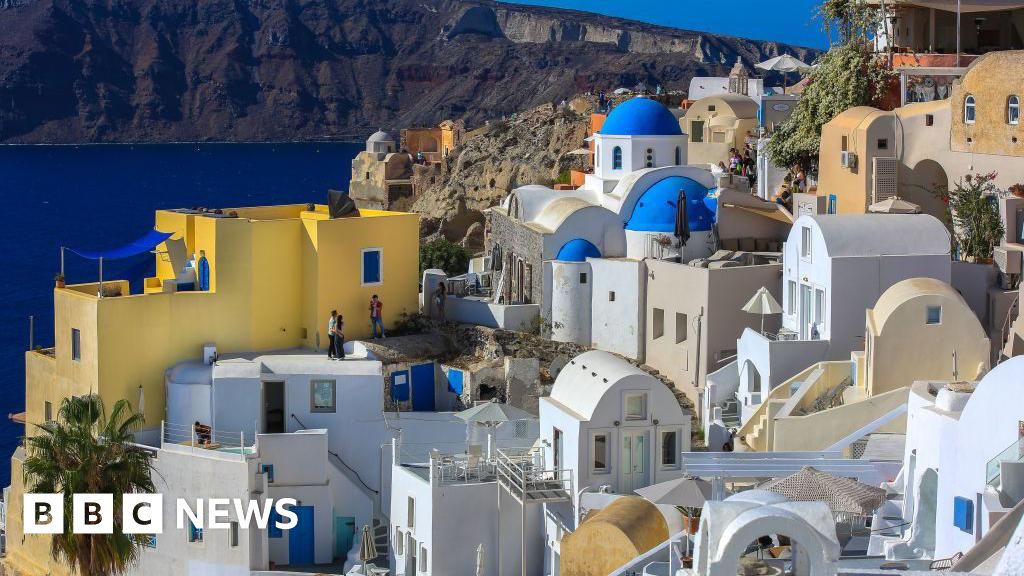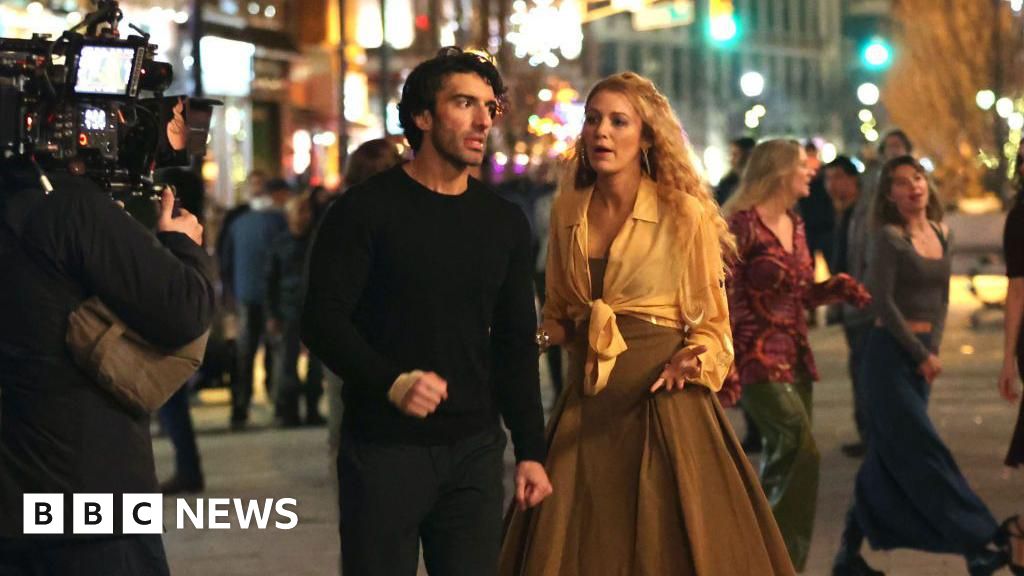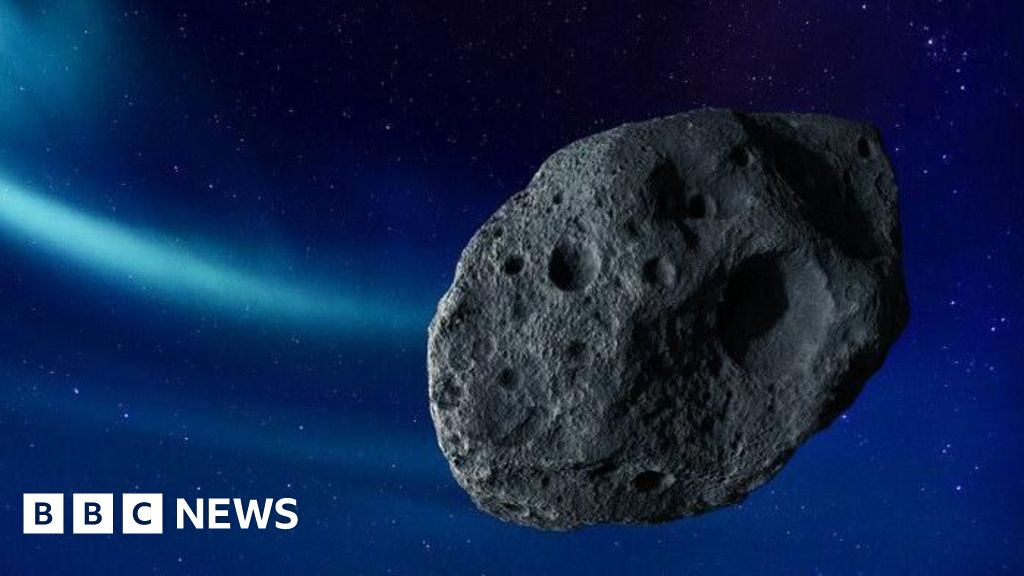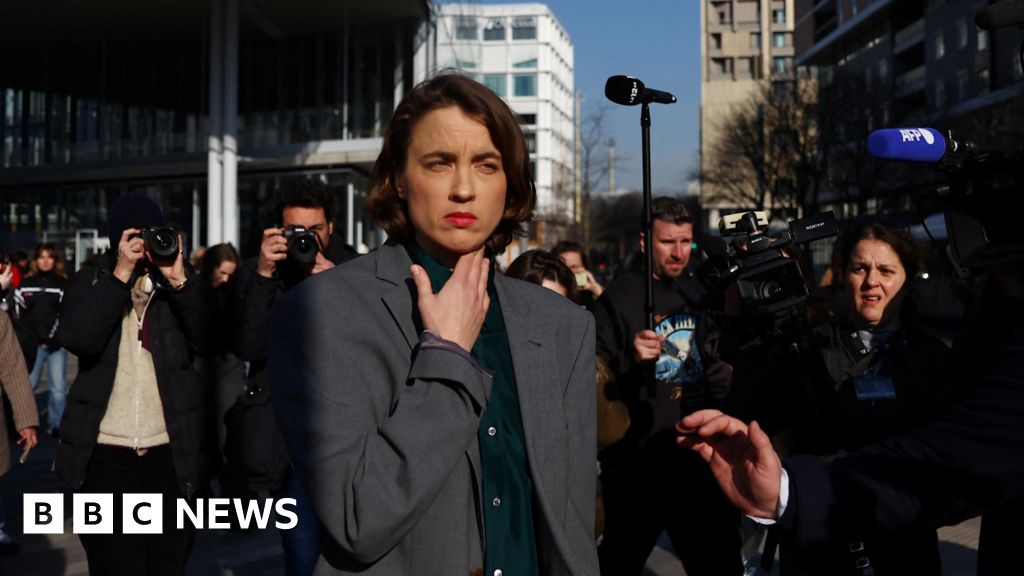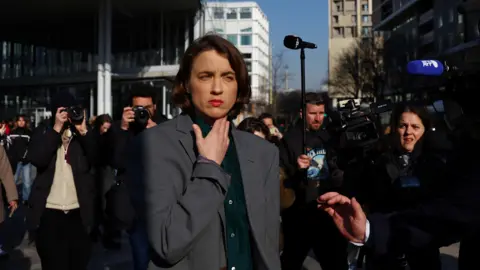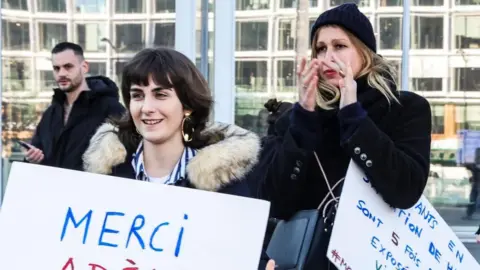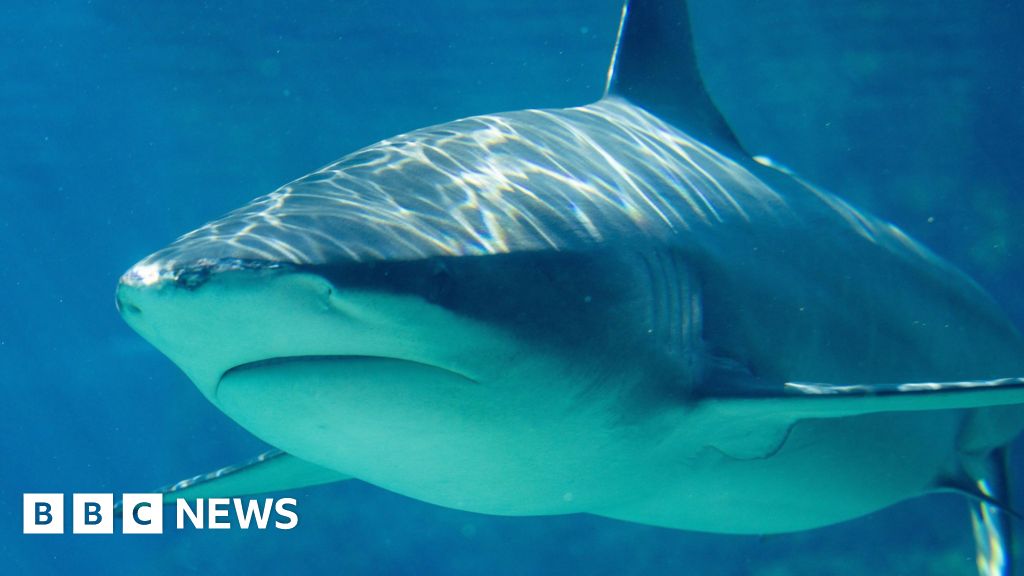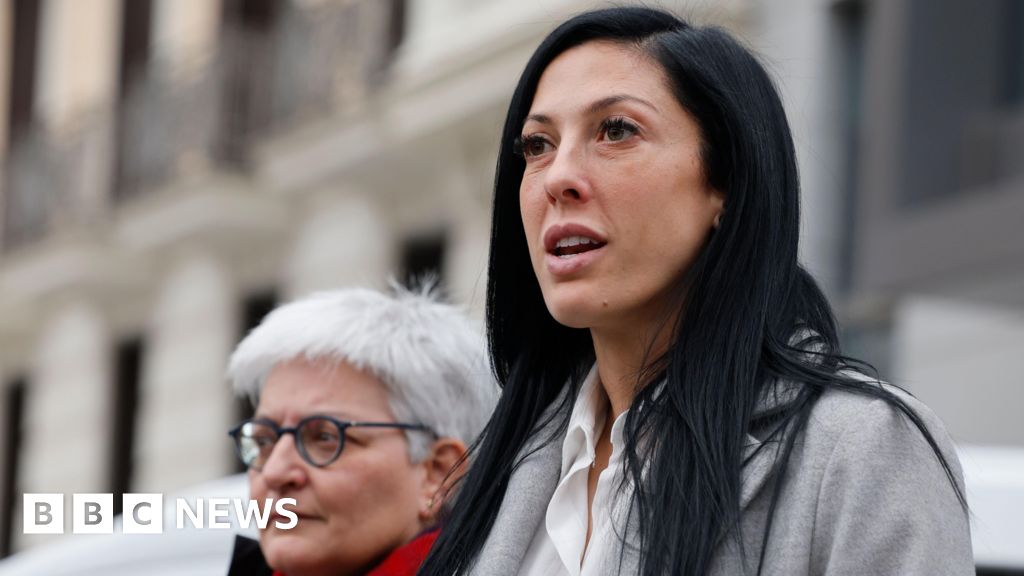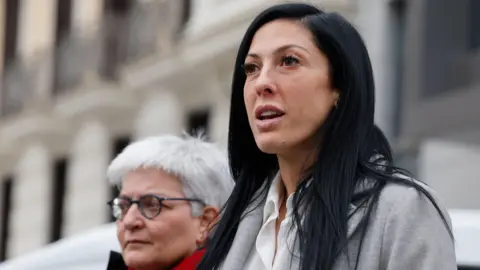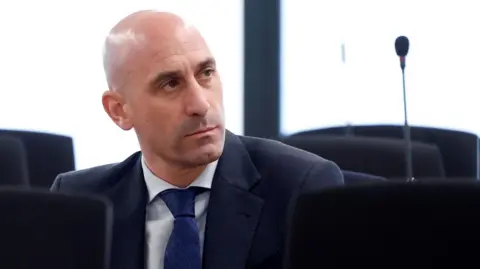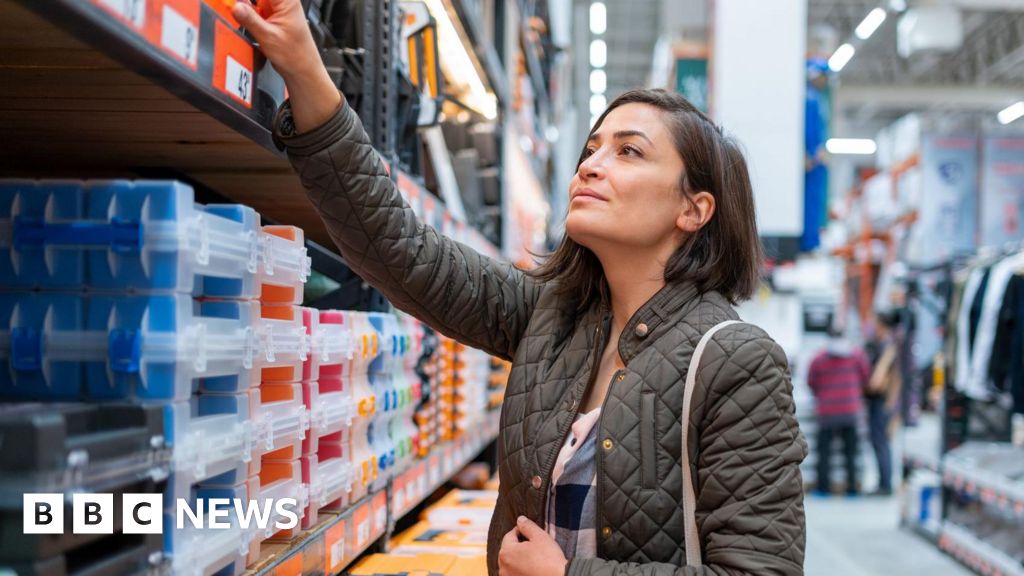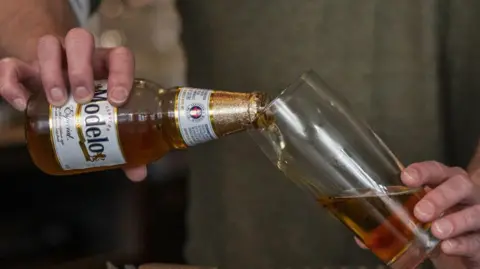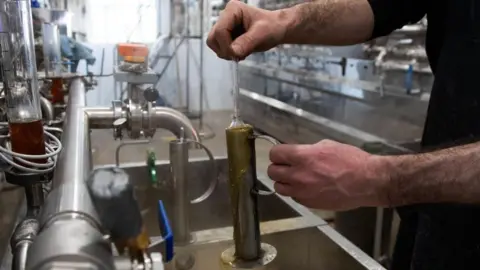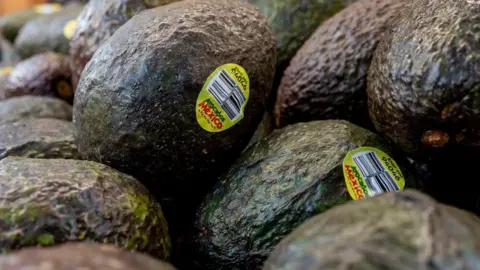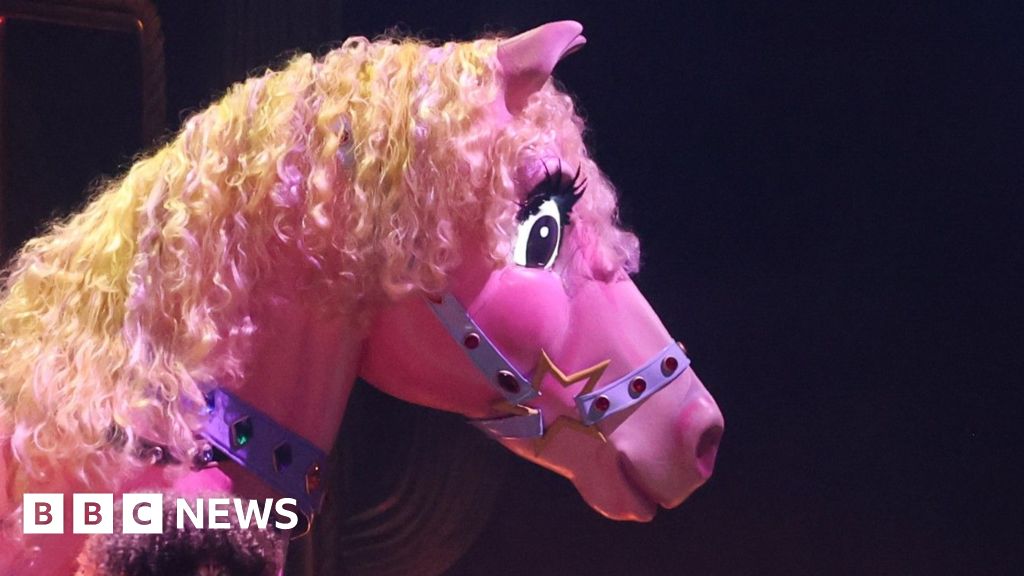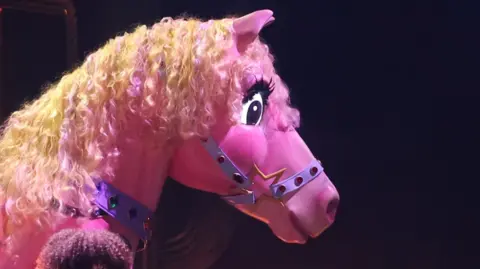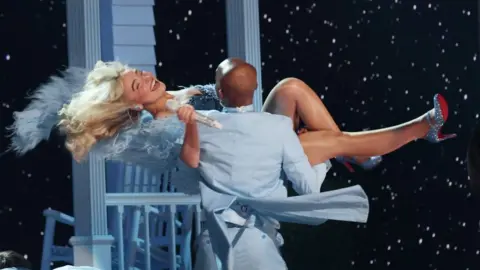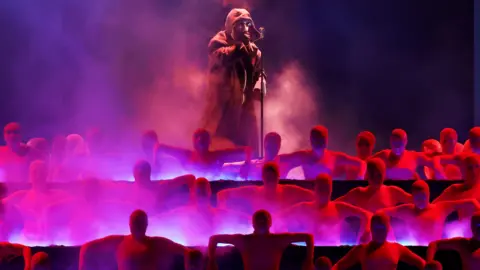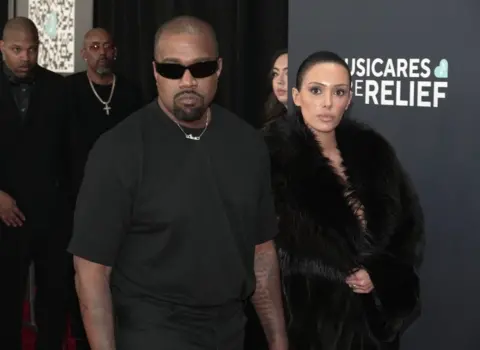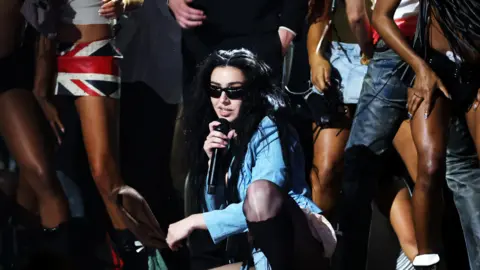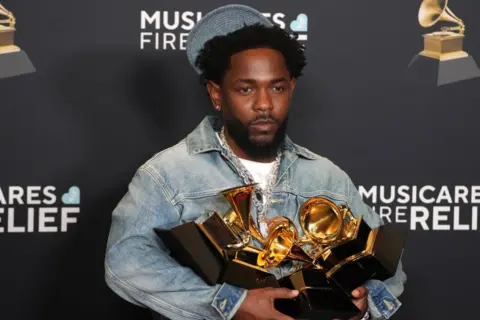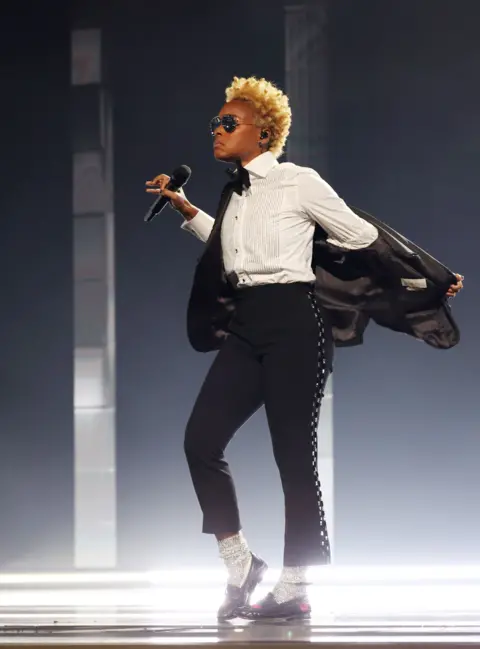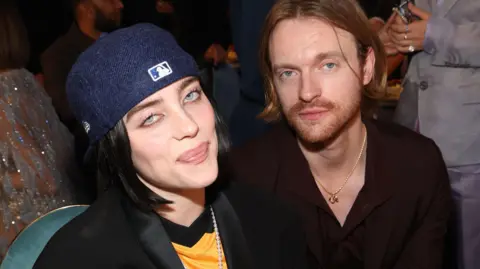BBC News Investigations
A self-styled “beauty consultant”, whose celebrity client list includes Katie Price, is offering potentially dangerous cosmetic procedures to clients and handing over medication illegally – a BBC investigation has discovered.
Ricky Sawyer specialises in liquid Brazilian butt-lifts (BBLs) – which involves injecting dermal filler into buttocks to lift them and make them look bigger.
BBC News has spoken to five of his clients who needed emergency hospital treatment after their procedures. We have also been shown the testimonies of more than 30 women who say they have been left with serious complications such as sepsis and necrosis (tissue death).
One woman told us she felt at the time she would rather “have died” than continue with the pain she was in following the treatment.
Several local authorities have banned Mr Sawyer from practising in their areas.
Our undercover filming captured Mr Sawyer handing out antibiotics without a valid prescription – a criminal offence. He is not qualified to prescribe and the pills were not labelled for a specific patient.
He also offered to inject increasing doses of local anaesthetic without a prescriber present – again illegal – and did not ask for our reporter’s weight, thus putting her at risk of an overdose.

Posing as a potential client and her friend, we had booked a 45-minute appointment with Mr Sawyer through his Instagram page. We told him we wanted a 200ml (7fl oz) liquid BBL injection costing £1,200. We paid a £200 deposit.
Despite having advertised that all liquid BBLs would be carried out under the guidance of an “ultrasound specialist doctor”, none was present at his pop-up clinic. He was working out of a small room in an east London office block – a non-clinical environment which would have increased the risk of infection.
Within five minutes of being in his office, Mr Sawyer had begun to encourage our reporter to think about increasing the amount of filler. “You might be surprised about how much product you can have and still look natural,” he suggested.
By the end of the appointment, Mr Sawyer had offered to inject a litre of filler – 500ml (almost a pint) per buttock – at a cost of £2,000.
We did not go through with it and later returned to put our allegations to him – but he refused to answer our questions and slammed the door on our reporter.
Reviewing our footage, plastic surgeon Dalvi Humzah, who sits on the Joint Council of Cosmetic Practitioners, said Mr Sawyer’s actions were “shocking”, “very dangerous”, and putting patients at a huge risk of infection and potentially fatal complications.
“Putting that volume in, in one sitting, is really dangerous,” said Mr Humzah. “The buttocks are such a large area that if they become infected it can overwhelm the body and could end in sepsis – or even death.”
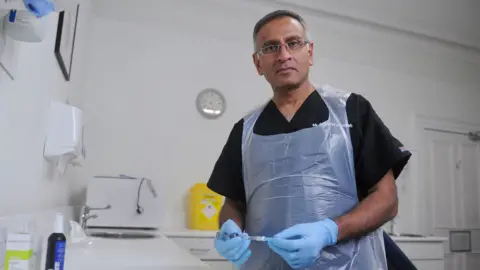
The filler used for liquid BBLs is often made up of hyaluronic acid, which is commonly used in facial filling treatments. Because large amounts of the acid are involved in BBLs, and there is a risk of serious side effects such as blood clots and sepsis, it is regarded as one of the most dangerous cosmetic procedures.
Mr Sawyer boasted on camera that he did up to seven procedures a day, six days a week. He can charge thousands of pounds per appointment.
One of the women who said she had experienced serious complications after receiving a liquid BBL from Mr Sawyer was Joanne. A mum of two from south Wales, who only wants us to use her first name, she travelled seven hours to Essex for the treatment.
Having had other cosmetic treatments before and having been persuaded by Ricky Sawyer’s many adverts and celebrity endorsements, a liquid BBL didn’t seem like such a big step to her.
All she wanted, she says, was a “peachy bum”.
But when Joanne arrived, she began to have second thoughts.
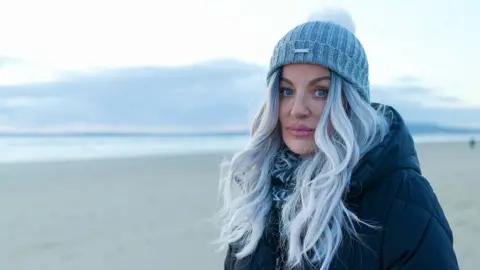
She had only been sent a postcode and says she seemed to be walking into an industrial estate.
In the end, she found a small door into a block of flats and says she was told to wait in a “dingy little hallway” for about half an hour.
“I should have turned and ran,” she says, “but I had paid £600 deposit and travelled all this way.”
She was taken into a small room where there “was only a bed, a tiny stool and a worktop”, and that is where she says she first met Ricky Sawyer.
After counting out the rest of her cash – £2,000 in total – she says he told her to stand in front of him while he sat on the stool.
As he started to inject her with a litre (1.8 pints) of filler, the pain quickly became unbearable.
“I felt dizzy, sick and like shaky. My legs didn’t even move properly. And that was all within a minute of him starting,” she says. “I remember looking round and he had white gloves on that were full of blood.”
By the end of the procedure, Joanne was in agony: “I was in so much pain, my bottom was completely disfigured.”
She says she could barely sit down. By the time she got home the swelling had started and she could hardly walk.
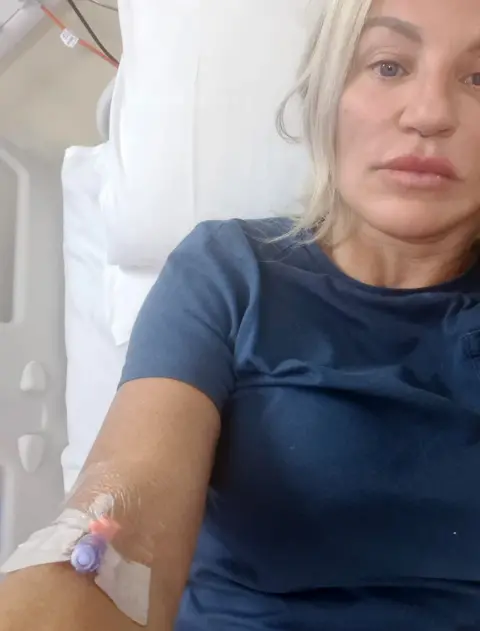
“I messaged Ricky loads of times to say how bad I was feeling and how worried I was. He just told me to take my antibiotics.”
By this point, sepsis had begun to set in.
“My temperature kept on going up and I felt terrible,” says Joanne. “I had to phone 999. I was dripping with sweat and screaming.”
In hospital, she was attached to intravenous antibiotics. At one point, a surgeon drew on her buttock to indicate where they might need to cut, because the infection was spreading so quickly.
After messaging Ricky Sawyer saying she was in hospital with sepsis, she says he blocked her from his Instagram account.
Fortunately, Joanne did not need an operation.
Another of Mr Sawyer’s clients, Louise Moller, did need life-saving emergency surgery.
Four days after receiving a liquid BBL at his Essex clinic in October 2023, the 28-year-old from Bolton was in hospital.
She rang her mother, Janet, from Salford Royal’s A&E department saying: “Mum, I think I’m going to die.”
Louise had contracted sepsis and was warned by surgeons that she could die at any minute. To stop the infection from moving through her body, they cut dead tissue out of an area almost covering her entire left buttock.
 Janet Taylor
Janet TaylorJanet promised her daughter she would prevent this from happening to anyone else and reported Ricky Sawyer to their local police station in Bolton.
“How can he carry on knowing he could kill someone?” she told the BBC.
However, Louise’s case highlights the difficulty in holding practitioners like him accountable.
Janet says she was told by police in Bolton that the file would need to be passed to Essex Police, where the incident happened.
A prosecution could be difficult however, she was warned, because Louise had signed a consent form.
BBC News has approached both Greater Manchester Police and Essex Police to get an update on the case – both have said it is down to the other to investigate.
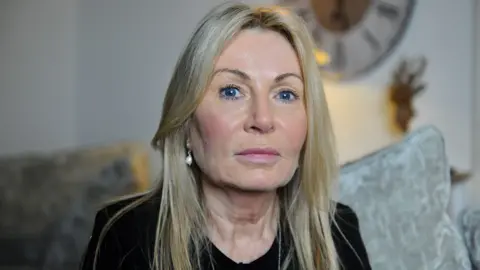
From a legal point of view, there is little to stop Mr Sawyer from practising.
Injecting dermal fillers is seen as non-surgical and is unregulated, which means anyone can do it – and they can’t be struck off and stopped.
In September 2024, Alice Webb is believed to have become the first person to die after receiving a liquid BBL in the UK. Her procedure was not carried out by Ricky Sawyer.
Following her death, Save Face – a group that campaigns for greater regulation to cover non-surgical procedures – called for a new law banning liquid BBLs from being carried out by anyone other than surgeons registered with the General Medical Council (GMC).
Save Face’s founder, Ashton Collins, says her organisation has received complaints from 39 women about Ricky Sawyer.
All the women, she says, have told her they have been left needing urgent hospital treatment. Each of them, she says, had a BBL and suffered complications such as sepsis, necrosis and disfigurement.
“We’ve encouraged these women to report their experiences to the police,” she says. “Some have, and nothing has been done.”
So far, the most effective action has been taken by local authorities, three of which – Glasgow City Council, Epping Forest District Council and Brentwood Council – confirmed they had issued prohibition notices under Health and Safety law to protect the public from serious injury.
But “he just moves on to different areas of the country and carries on”, says Ms Collins.
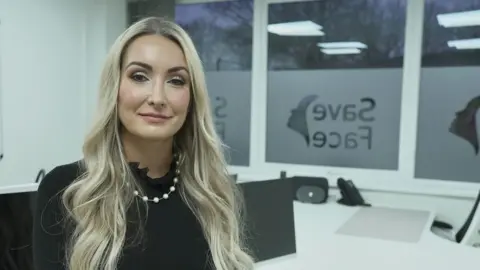
We put our evidence to the Department of Health and Social Care which said it was “urgently looking at options for tougher regulation”.
It said our findings were “shocking” and that those caught “dispensing medication without a licence should feel the full force of the law”.
We attempted to put our allegations to Ricky Sawyer in person, by confronting him at his east London clinic.
As soon as he saw the camera he tried to slam the door on us, before hiding behind it.
We asked him if he was breaking the law by handing out prescription-only medicine, and if he had anything to say to the women who say they were left with such serious injuries that they needed emergency care.
“No,” he said – and told us to leave.
The dangers of unregulated cosmetic surgery should be taken far more seriously, says Ashton Collins.
“The general vibe that you pick up is that these are silly women that have made silly choices, driven through vanity, and it’s their own fault.”
It is an attitude that needs to change, she adds: “People are out there taking risks with people’s lives, and they can do so with impunity.”
If you have information about this story and would like to share your experiences please contact shona.elliott@bbc.co.uk directly or use the form below. Do include a contact number if you are willing to speak to a BBC journalist.
